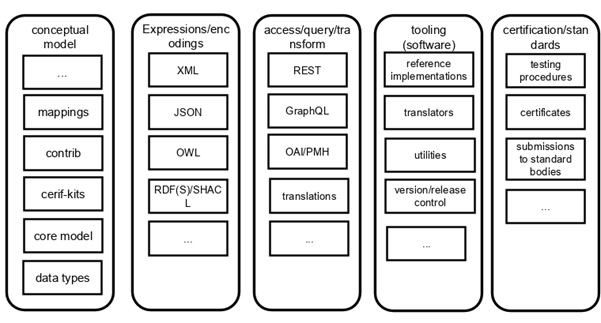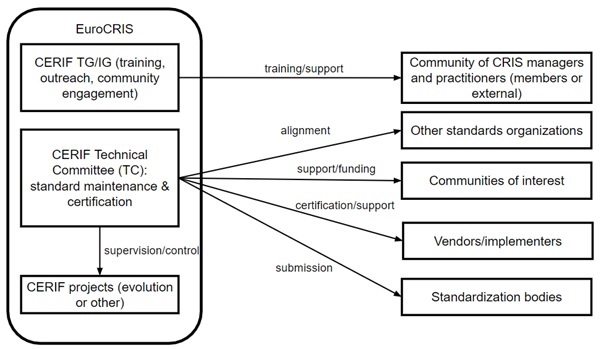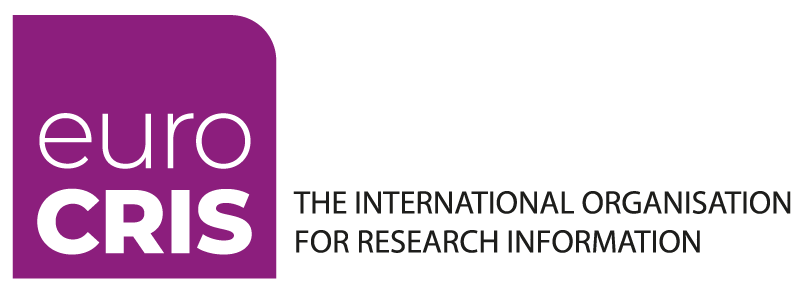The Common European Research Information Format (CERIF) standard has been with us for a rather long time in its current form and has served the research information management community well. Plenty of CRIS systems worldwide have been designed and built following the CERIF model as developed and maintained by the euroCRIS CERIF Task Group as a means to ensure the maximum possible level of system interoperability.
The limitation of the CERIF development to this CERIF TG poses some issues however, and there has been an increasing number of reflections within it on the need to refactor the current CERIF structure along with the processes for extending or building associated software or extensions. This would involve updating the CERIF spec to more current software engineering practices that have modularity and extensibility at its core so that it is easier to decentralise the work on the standard and tools.
The figure below provides a tentative (and partial) depiction of the work we see under this vision for the CERIF refactoring project in the medium term. euroCRIS is the custodian for the CERIF model, but we wouldn’t want this to become a bottleneck for anyone else interested in building functionality on top of what’s available right now, so clear modularity and separation of concerns would allow different communities of interest or practice to work independently on top of the core technology and models provided by CERIF.

The key idea is factoring out the core model and then building models on top of it for applications or domains of higher levels of specificity, including:
- national and regional particularities, or
- specificities of particular scientific practices, infrastructures or methods.
Further, different modules, ideally developed independently as open source, could be layered on top of those models.
The CERIF refactoring project would in consequence focus on defining and designing a core model on which other parties are able to build onto if they so wished. This core model will include the major entities in the CERIF 1.5 reference, leaving out other entities and reassigning them to other modules. The slide above lists the possible expressions/encodings, from which the most valuable one will be chosen, dropping those that may not be so important.
The second figure below shows a possible approach on how euroCRIS would like to address this CERIF refactoring and evolution work. We plan to keep the CERIF TG for the purpose of training and communication about CERIF, but the aims of this project exceed its remit. This is the reason why there are plans to create an additional CERIF Technical Committee (TC) to deal with the tasks and workflows described below. This CERIF TC will be different from the Board and may well include industry and key players in the field, that contribute a technical, highly specialised perspective to the community.
A call for nominations for this TC describing the scope of the work and the expected involvement will soon be sent out to all euroCRIS members via our mailing list.



